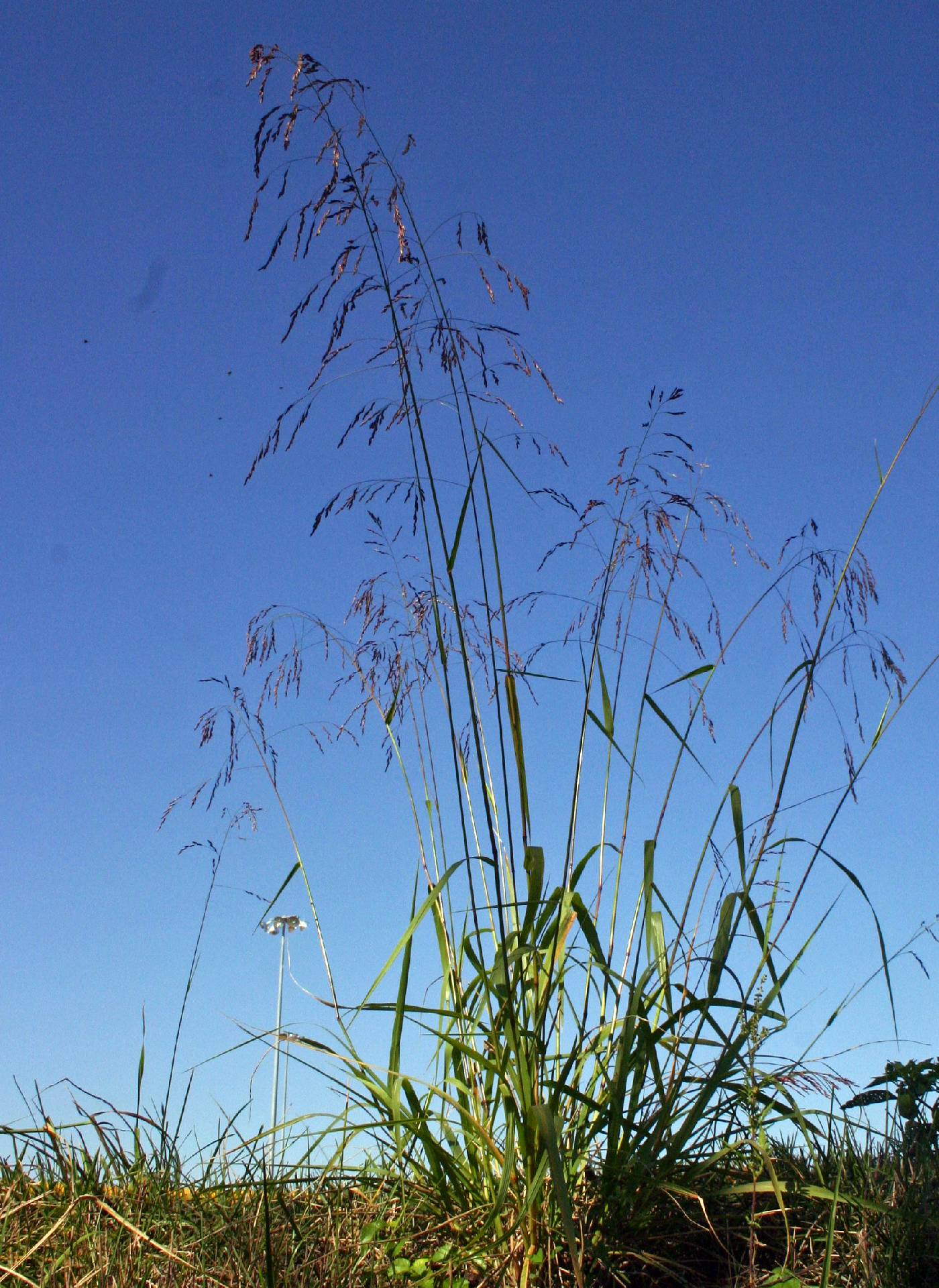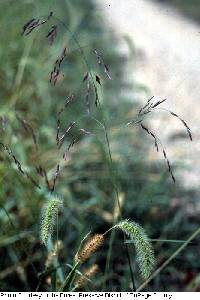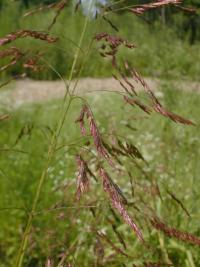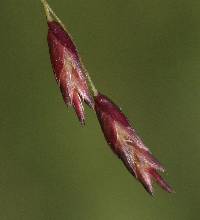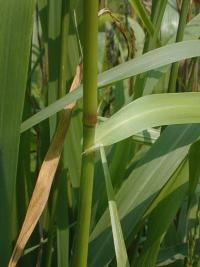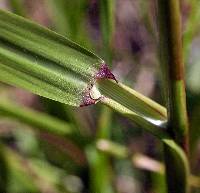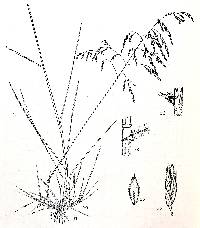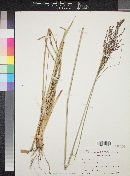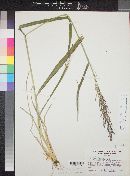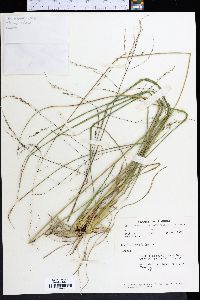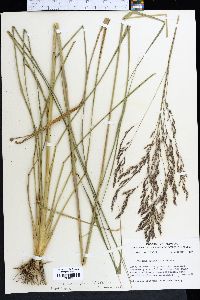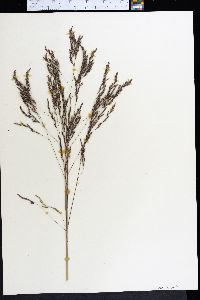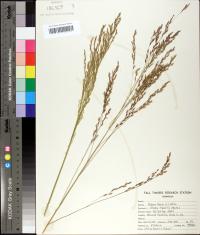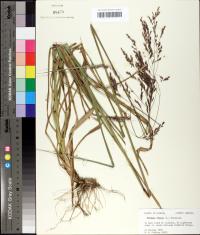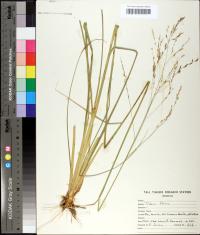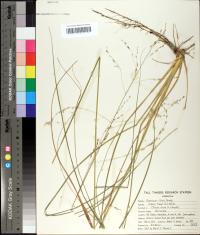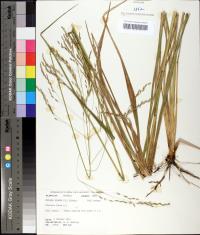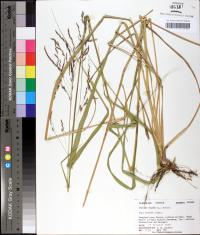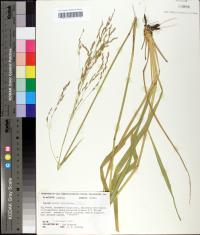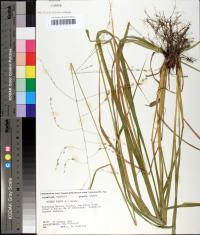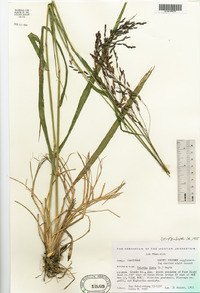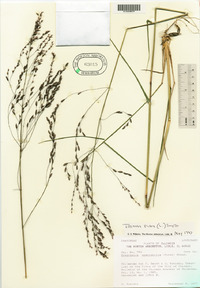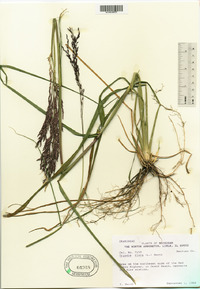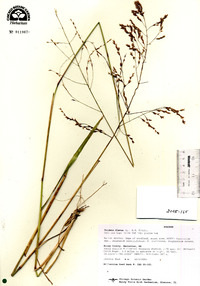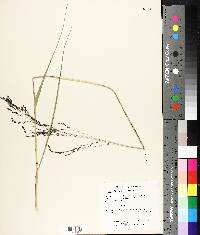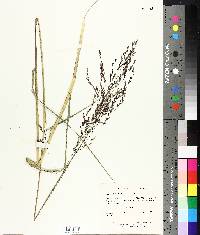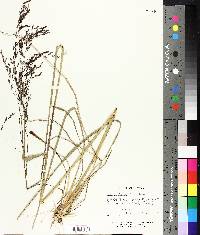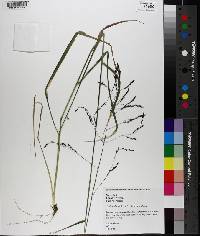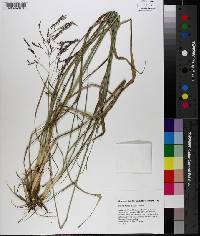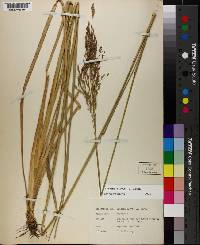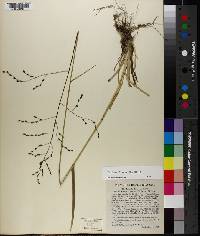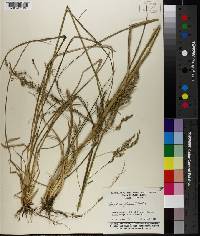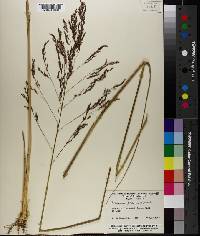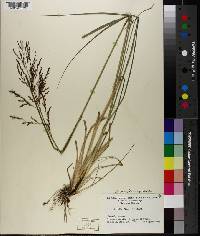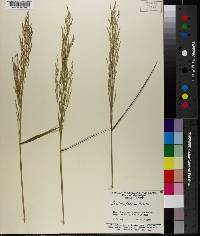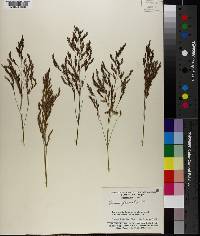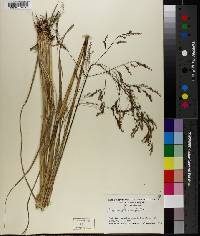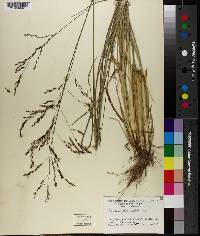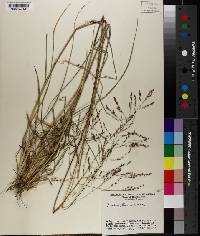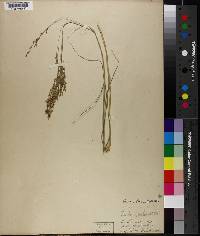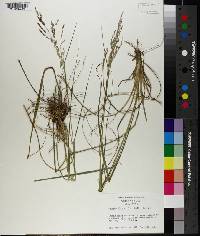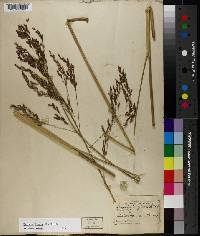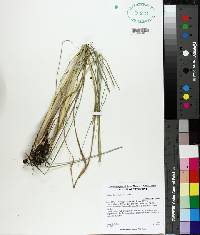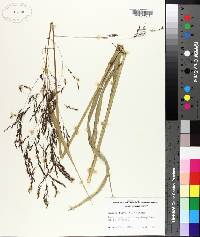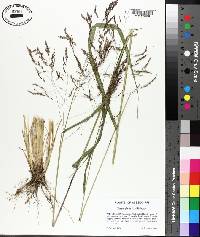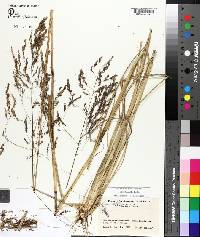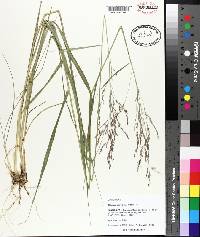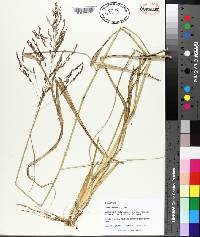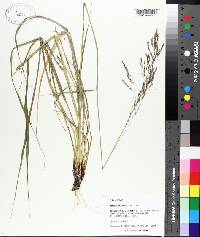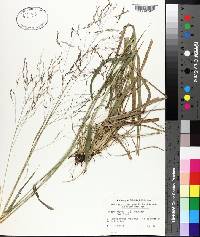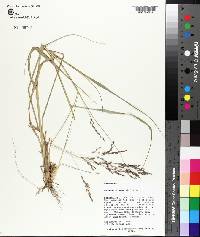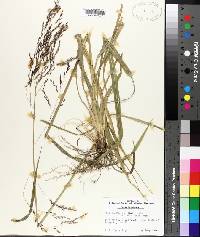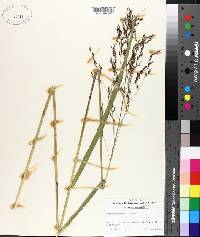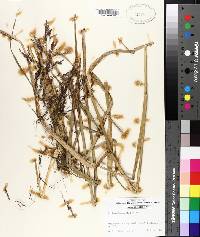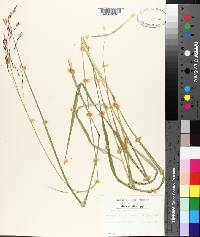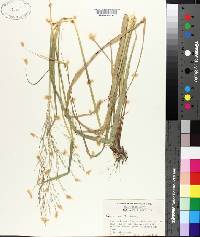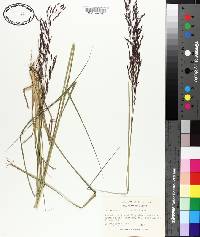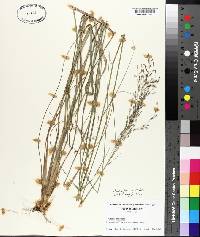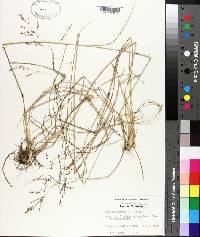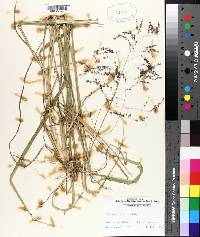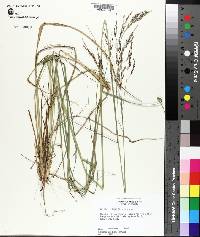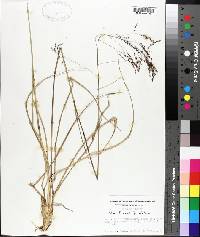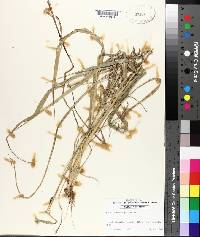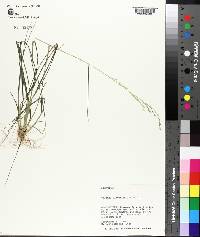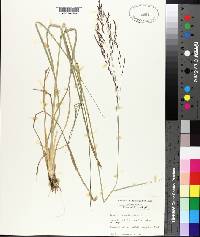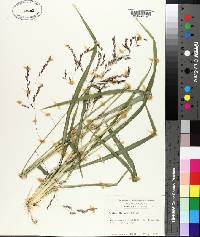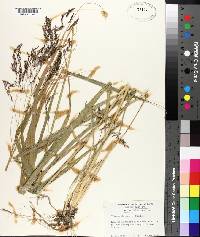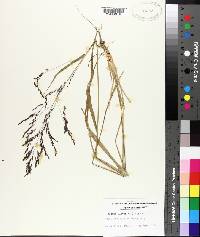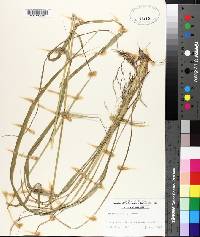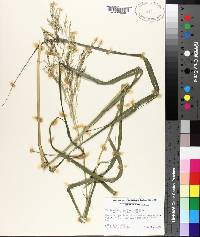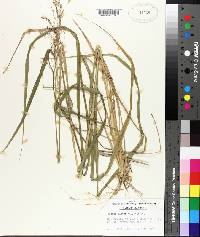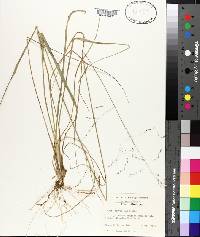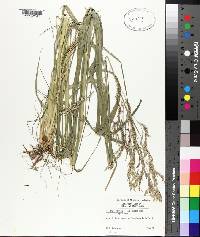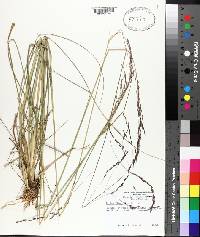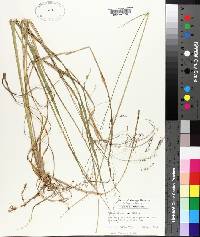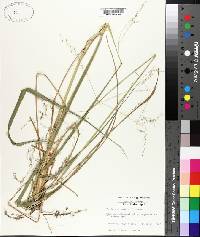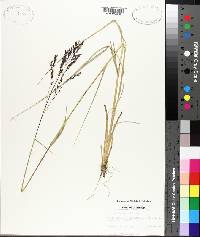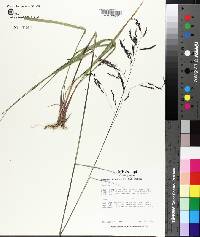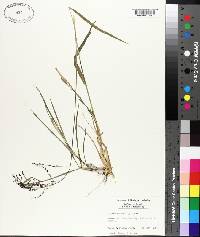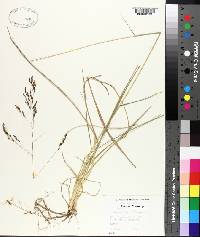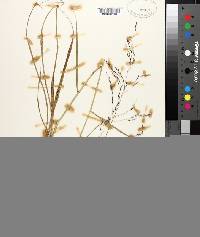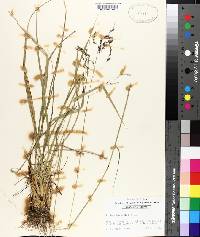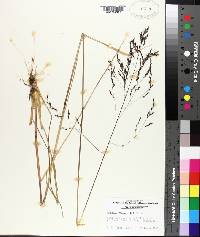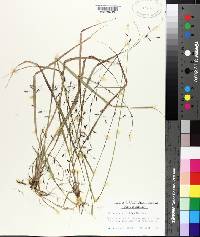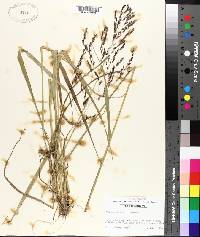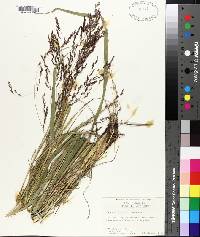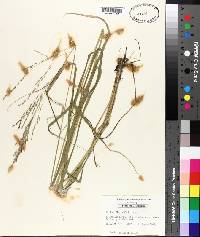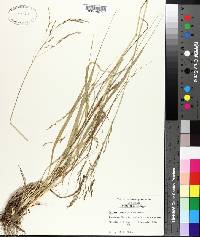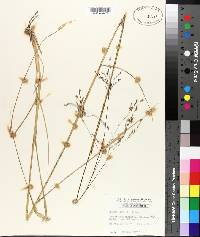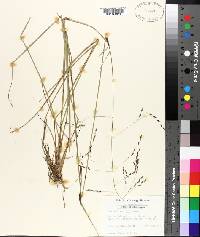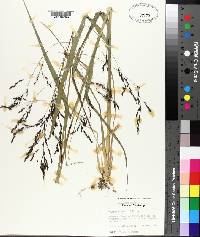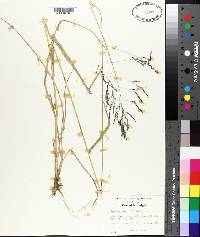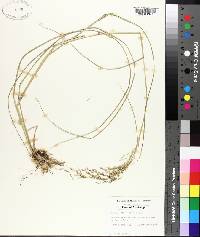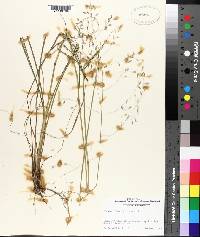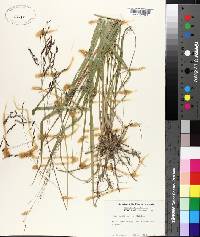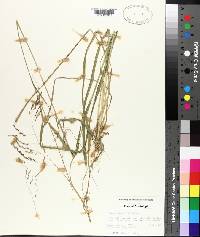Tridens flavus
|
|
|
|
Family: Poaceae
Tall Redtop, more...Purpletop Tridens
[Cynodon carolinianus (P. Beauv.) Raspail, moreEragrostis arundinacea Jedwabn., Eragrostis tricuspis Trin., Festuca flava (L.) F. Muell., Festuca quadridens Bosc ex Trin., Panicum festucoides Poir., Poa arundinacea Poir., Poa caerulescens Michx. ex P. Beauv., Poa flava , Poa quinquefida Pursh, Poa sesleroides Michx., Sieglingia cuprea (Jacq.) Millsp., Sieglingia flava , Sieglingia sesleroides (Michx.) Scribn., Sieglingia sesleroides var. intermedia Vasey ex L.H. Dewey, Tricuspis caroliniana P. Beauv., Tricuspis flava (L.) F.T. Hubb., Tricuspis novae-boracensis P. Beauv., Tricuspis quinquefida P. Beauv. ex Don, Tricuspis seslerioides , Tricuspis sesleroides Torr., Tricuspis sesleroides var. flexuosa Alph. Wood, Tricuspis sesleroides var. pallida T. Holm, Tridens flavus f. cuprea (Jacq.) Fosberg, Tridens flavus f. cupreus (J.Jacq.) Fosberg, Tridens flavus var. aristatus (Scribn. & C.R. Ball) Shinners, Tridens quinquefidus (Pursh) Roem. & Schult., Tridens sesleroides Nash, Triodia caerulescens (Michx.) Desv., Triodia cuprea , Triodia festucoides (Poir.) Desv., Triodia flava f. cuprea (Jacq.) Fosberg, Triodia flava f. flava (L.) Smyth, Triodia flava var. aristata (Scribn. & C.R. Ball) Fernald & Griscom, Triodia novaeboracensis (P. Beauv.) Desv., Triodia sesleroides var. aristata Scribn. & C.R. Ball, Triodia triticoides C.A. Gardner, Uralepis cuprea (Jacq.) Kunth, Uralepis tricuspis (Trin.) Steud., Windsoria poiformis Nutt.] |
Plants with firm, knotty, shortly rhizomatous bases. Culms 60-180 cm. Sheaths keeled, mostly glabrous, collars pubescent; ligules to 0.5 mm, membranous, ciliate; blades 3-10 mm wide, glabrous or sparsely hispid, apices attenuate and involute. Panicles 15-40 cm long, 3-5 cm wide, erect or nodding; branches 10-15(25) cm, strongly divergent to drooping, stiff or lax, lower branches naked for 1/3-1/2 of their length; pedicels 3-8 mm. Spikelets 5-10 mm long, with 4-8 florets. Lower glumes 2.5-3 mm, often mucronate; upper glumes 3.5-4 mm; lemmas 3-5 mm, lateral veins puberulent or ciliate to well above midlength, midveins and lateral veins usually excurrent, midveins extending to 0.5 mm, lateral vein extensions shorter; paleas as long as the lemmas, widened below; anthers 1-1.5 mm. Caryopses 1.8-2 mm. 2n = 40. Perennial knotty-based herb with short rhizomes 0.6 - 2.2 m tall Leaves: with open sheaths that are shorter than the internodes, longitudinally folded, and usually hairless but hairy at the collars. The membranous ligules reach 0.5 mm long and have margin lined with hairs. Blades 6 - 25 cm long, 3 - 10 mm wide, gradually tapering to the tip, hairless or sparsely bristly-haired, with margins that are flat or rolling toward the upper surface of the midvein (involute). Inflorescence: terminal, branched (panicle), rising above the upper leaves, 15 - 40 cm long, 3 - 5 cm wide, erect or nodding, with divergent or drooping branches 10 - 25 cm long. The lower branches lack spikelets for one-third to one-half of the length. Fruit: a dark brown caryopsis, 1.8 - 2 mm long, kidney-shaped in cross section. Culm: 0.6 - 1.8 m long, erect and more or less hairless. Spikelets: 5 - 10 mm long, laterally compressed, borne on a stalk to 3 - 8 mm long. Glumes: unequal, with the lower glume 2.5 - 3 mm long and usually ending in a short abrupt tip, and the upper glume 3.5 - 4 mm long. Florets: four to eight per spikelet, with three reddish purple anthers 1 - 1.5 mm long. Lemma: 3 - 5 mm long, with hairy midveins and lateral veins extending past the end of the lemma (excurrent). Palea: as long as the lemma, widening at the base. Similar species: No information at this time. Flowering: early August to late September Habitat and ecology: Introduced from the southern United States, this species is common along mowed ditches, sandy roadsides, and sandy fields. Occurence in the Chicago region: non-native Etymology: Tridens means three-toothed. Flavus means yellow. Author: The Morton Arboretum Tufted and sometimes with very short rhizomes, 8-15 dm; sheaths bearded at the top, otherwise glabrous, as are the blades, these 3-8 mm wide, elongate to a slender tip; infl viscid, with loosely spreading-ascending branches villous at base above; spikelets purple (yellow), narrowly ovoid, scarcely compressed, 5-10 mm, 4-9-fld, the lateral ones appressed along the branchlets or on looser pedicels to ca 3 mm; glumes unequal, firm, oblong or ovate, 2.5-3.5 mm, 1- veined, obtuse or often mucronate; lemmas regularly imbricate, densely villous on the basal half; 2n=40. Fields, roadsides, and open woods; Mass. to s. Ont., s. Mich., and Nebr., s. to Fla. and Tex. (Triodia f.) Most of our plants belong to the widespread var. flavus, as principally described above. The more strictly southeastern var. chapmanii (Small) Shinners reaches our range in se. Va. and s. N.J. It has more divergent panicle-branches, villous all around at the more strongly buttressed base, and the spikelets are on longer, more divergent pedicels mostly 3-20 mm. (T. c.) Gleason, Henry A. & Cronquist, Arthur J. 1991. Manual of vascular plants of northeastern United States and adjacent Canada. lxxv + 910 pp. ©The New York Botanical Garden. All rights reserved. Used by permission. |

